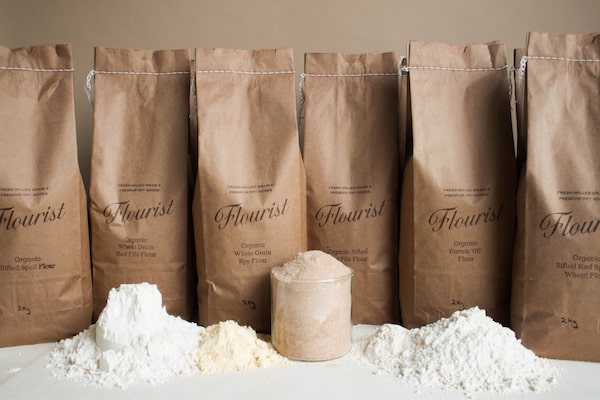Baking is a common, therapeutic response to crisis.
Across the country, and around the world, people are baking. Stress baking, comfort baking, "COVID baking” – whatever you call or hashtag it, social distancing and self-isolation are inspiring batches of homemade cookies and muffins, breads and sourdough starters. And there are likely more cinnamon buns in the oven right now than on Easter and Christmas morning combined.
“I pulled out my husband’s Italian grandmother’s recipe for dinner buns the very first day we stayed home,” said Erica O’Donnell, a digital strategist in Calgary. “I guess there was something comforting in the thought of channelling her pioneering resilience.”
Erin Stang Chrusch, a mother of three who works in Calgary Mayor Naheed Nenshi’s office (but is now working remotely), made her first batch of rolls last Sunday. “Being close to home for extended periods of time means that I can be there to let the dough rise for an hour, then knead, let it rise again,” she said. “Our normal schedule doesn’t allow that luxury.”

Vancouver-based mill and bakery Flourist has seen a 200-per-cent increase in sales over the past month.Handout
Baking is a common response to crises – therapy for some, a means of comforting ourselves and each other. It’s a great indoor project to occupy kids while schools are closed and, most importantly, can generate a fresh supply of bread without trips to the bakery or grocery store. But with so much baking going on, inventories of flour and yeast have been depleted on store shelves across the country.
Tony and Penny Marshall of Highwood Crossing in High River, Alta., a small-scale organic farm that produces grains, flours and baking mixes, have seen an enormous spike in consumer demand. “This week we sold 16,000 pounds just of all-purpose flour, and all of it was in 10 and 20 kilogram bags,” said Tony. “We normally sell about 2,000 pounds a week.” Their online sales were up 400 per cent when they temporarily halted that part of their business so they could catch up with orders.

The Flourist had to make their flours unavailable online for a time so their team could catch up.britney gill
Similarly, the owners of Flourist, a mill and bakery in Vancouver, have seen a 200-per-cent increase in sales over the past month, even as they pivot their bricks-and-mortar operation into a non-contact pick-up and delivery hub for local customers. “We have a very robust supply of grain, but we mill to order with our stone mill, and the orders very quickly reach, and then exceed, our daily capacity,” said co-owner Jenna Bishop. “We’ve had to make our flours unavailable online for almost a week now so our small team can catch up.”
Images of empty store shelves and stories of shortages on social media can trigger even greater consumer demand, but wheat is Canada’s largest acreage crop by far, and there’s plenty to go around, even though we export roughly 75 per cent of what we grow – 22 million tonnes of wheat and durum wheat annually.
“We’re not going to run out,” said Tom Steve, general manager of the Alberta wheat and barley commissions. According to the Canadian National Millers Association, he said, domestic mills are operating normally and have the capacity to continue, as their plants and staff are able to function within the new COVID-19 guidelines and there is no threat to the supply – other than people panic buying.
“People are hoarding flour because they think we’re going to run out, but we have no evidence of that,” Steve said. “If there was even a hint of a shortage for Canadian consumers, we’d divert supplies to the Canadian market. The reality is we produce so much wheat, there would have to be a catastrophe for us to not have enough to supply the mills.”

The Canadian National Millers Association has assured domestic mills are operating normally.britney gill
He said the current scarcity on grocery store shelves was compounded by last month’s railway blockades. Most of the country’s wheat is grown on the Prairies – half in Saskatchewan and a third in Alberta – but there are mills across the country. “When the eastern mills couldn’t get shipments of western grain, that did more damage to the supply chain than what we’re seeing now,” Steve said. “They need to catch up.”
With new home bakers rediscovering old family recipes, comfort baking doesn’t appear to be slowing down. But Steve expects the baking aisles to be back to their usual volume soon. “Is there a shortage? No. Not at all,” he said. “There’s a lot of wheat to go around.”
Plan your weekend with our Good Taste newsletter, offering wine advice and reviews, recipes, restaurant news and more. Sign up today.